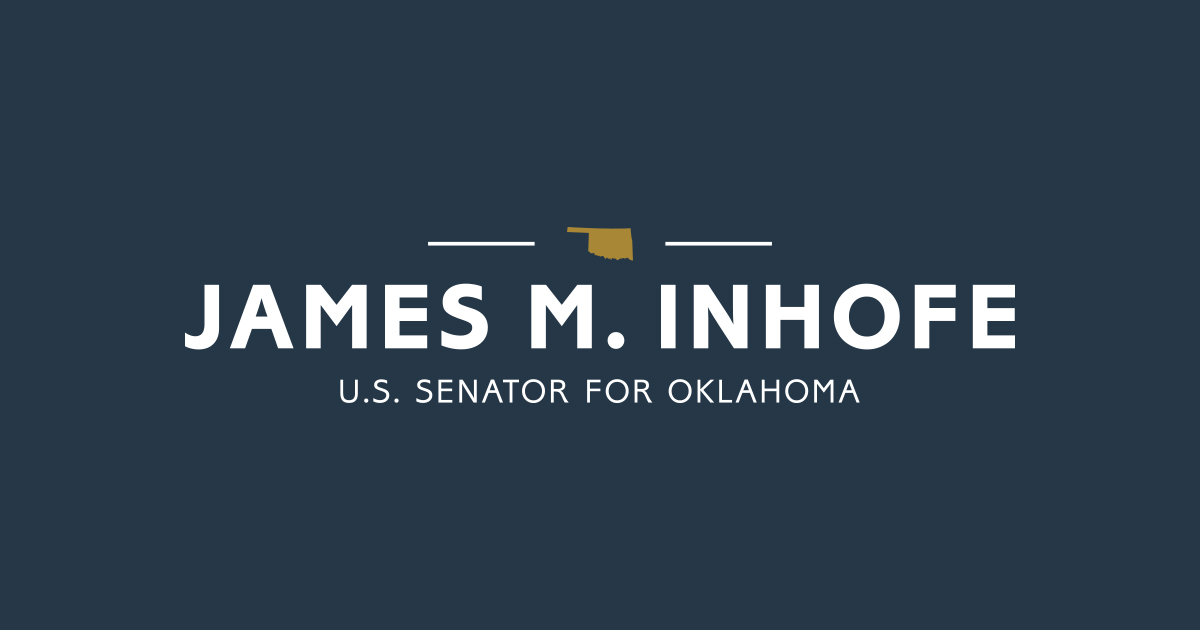Source: United States Senator for Oklahoma James Inhofe
Yesterday, U.S. Sen. Jim Inhofe (R-Okla.) senior member of the Environment and Public Works (EPW) Committee, questioned witnesses at an EPW hearing entitled: PFAS: the View from Affected Citizens and States.
Witnesses included: Joanne Stanton, Co-founder, Buxmont Coalition for Safer Water; James Kenney, Cabinet Secretary, New Mexico Environment Department; G. Tracy Mehan III, Executive Director of Government Affairs, American Water Works Association; Scott Mandirola, Deputy Secretary for External Affairs, West Virginia Department of Environmental Protection.
Click here to watch Inhofe’s full remarks.
Inhofe: Thank you, Mr. Chairman.
I appreciate this, and of course, I used to chair this committee, and we have been addressing this for a long period of time, and we haven’t found the solutions yet. I think we’re kind of intending to talk around it. I can remember back when the FAA didn’t just require commercial airlines or airports to have available, PFAS [based firefighting foam], but also required them to use it. Now, that’s no longer the case; that was changed in 2018 with FAA reauthorization. Even though it’s not required, they are still using it, and I think we all agree that that’s what’s happening right now. So, we know the FAA, DOD, everyone is researching it and trying to get a solution; they don’t have a solution yet, and that’s the problem. I can’t help but think they are arriving at solutions by now because this has been going on for a long period of time.
So, I guess, Mr. Mandirola, I would just ask you, are you aware of any PFAS-free foams that are proven to be as effective and fast-acting as PFAS-based foams? I am reading that question to make sure I get it right because I expect an answer from you.
Mandirola: Obviously, my specialty is water quality and environmental protection. I am not a fire-fighting expert, but I have participated, listened in, on a number of PFAS-related presentations. I am, personally, not aware of any replacement that’s as effective as AFFF.
Inhofe: You know, I’m not either. I have looked, and of course, we have had a lot of these hearings, and we have a lot of experts, and that’s kind of the reality of today.
Mr. Mehan, as you know, there are hundreds of PFAS in existence, and they are all of diverse compounds. Some are liquids, some are gases, and just an unlimited number that are out there, so a lot of people are supporting the lumping of all PFAS into a single regulated class. But those proposals, some of them, are misguided because they don’t take into account the diverse nature of these chemicals. So, I think you are in a position to respond to the question. Would you discuss why efforts to regulate PFAS as one single class would not be the preferred way of doing it, or would be difficult if not impossible to do?
Mehan: Thank you, Senator.
Well, you could do it, but it wouldn’t be prudent. You couldn’t do it so much with an MCL, you would have to use a treatment technique, which would then pretty much push everybody, which is pretty costly treatment technologies. I think the discussion that was just had about the cost to rate payers indicates one of the problems with going after the whole class. If you look at our written testimony at the bottom of page nine, we just costed out doing two, the two legacy, PFOA and PFOS. I think, you know, we are talking three billion, if you start at the EPA level. If you start using the standards that some of the states are using, at the more stricter level, you get the 38 billion, and that’s just capital cost for two. If you start adding in O&M and disposal and waste management, those costs get up to a billion annually. If you are doing three, four, five, six hundred, just plug in the numbers into the equation, and the numbers become quite staggering. Whether it’s using granular or activated carbon, or to go beyond just say, three or four PFAS compounds, then you are into ion exchange and some very expensive treatments. There are tradeoffs to be faced, and AWWA, is I believe, the wise course of action, is to follow the procedures in the Safe Drinking Water Act and the ’96 amendments, which as I said before are science-based, data-driven and risk-focused. That’s the prudent way to do it, and it attends to the relative risk issues. You know, we have got a new lead copper rule coming. I saw where Cincinnati is going to increase water rate three point something percent this year, and 5.5 percent for the next four years just to deal with lead and copper service line removal. Prudence may sound like a tame, conservative word, but I think it is the right word to use when talking about addressing PFAS as an environment and public health issue.
Inhofe: Thank you, Mr. Mehan, and thank you, Mr. Chairman.
